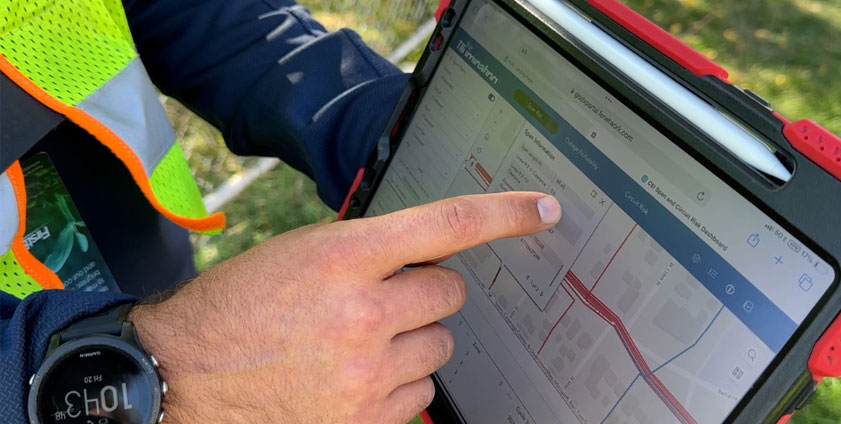New Technology to Predict Tree-Related Outages

October 3, 2024
FirstEnergy is among the first in the electric utility industry to deploy a new program that helps predict and reduce tree-related outages before they occur across our six-state service area.
Vegetation Management employees engineered an AI-driven program to calculate where trees pose the most risk to the electric system, particularly ahead of winter and summer storm seasons.
Known as the Advanced Vegetation Analytics Tool (AVAT), the prediction model pulls data – including soil, weather, roadway, historical outage data, geographical typography and high-resolution aerial patrol photos – from several internal and external databases. The data sets work together to identify patterns and calculate the likelihood of a tree coming down on a power line or equipment to ensure problematic trees are swiftly addressed.
“Not only is this tool helping us to keep the electricity flowing safely and reliably to our customers, but it is also helping us manage crews and our budget more efficiently,” said Tyler Woody, General Manager, Distribution Vegetation Management Operations. “By using this data tool to study the type of vegetation conditions in each area and the proximity to our power lines, we can better recommend the right type of equipment crews and contractors will need to bring with them to trim the first time they go out.”
Trees are the leading cause of power outages across the entire electric utility industry. FirstEnergy’s service territory in Ohio, Pennsylvania, New Jersey, Maryland, West Virginia and a small portion of New York encompasses some of the most densely forested areas in the country, with terrain varying from urban areas and flat agricultural land to rugged mountainous conditions more than 3,000 feet in elevation. These widely varying conditions can make vegetation management a challenge.
The new AVAT tool complements our comprehensive annual vegetation management methods, which involve professional tree crews assessing vegetation across our service area to determine the best approach to prevent trees from interfering with electrical facilities.